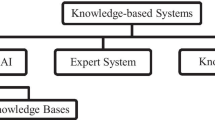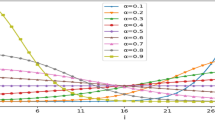Abstract
Purpose
Studies have shown the association between tongue color and diseases. To help clinicians make more objective and accurate decisions quickly, we take unsupervised learning to deal with the basic clustering of tongue color in a 2D way.
Methods
A total of 595 typical tongue images were analyzed. The 3D information extracted from the image was transformed into 2D information by principal component analysis (PCA). K-Means was applied for clustering into four diagnostic groups. The results were evaluated by clustering accuracy (CA), Jaccard similarity coefficient (JSC), and adjusted rand index (ARI).
Results
The new 2D information totally retained 89.63% original information in the L*a*b* color space. And our methods successfully classified tongue images into four clusters and the CA, ARI, and JSC were 89.04%, 0.721, and 0.890, respectively.
Conclusions
The 2D information of tongue color can be used for clustering and to improve the visualization. K-Means combined with PCA could be used for tongue color classification and diagnosis. Methods in the paper might provide reference for the other research based on image diagnosis technology.









Similar content being viewed by others
References
Zhang B, Wang X-z, You J, Zhang D (2013) Tongue color analysis for medical application. Evidence-based complementary and alternative medicine. Evid Based Complement Altern Med 2013:1–11
Li B, Huang Q, Lu Y, Chen S, Liang R, Wang Z (2008) A method of classifying tongue colors for traditional Chinese medicine diagnosis based on the CIELAB color space. In: International conference on medical biometrics. Springer
ISO 20498-5, Traditional Chinese medicine—computerized tongue image analysis system—part 5: method of acquisition and expression of tongue colour and tongue coating colour
Hao J, Zhu C-h, Cao R, Yang X, Ding X-l, Man Y, Xiong-zhi W (2016) Purple-bluish tongue is associated with platelet counts, and the recurrence of epithelial ovarian cancer. J Tradit Chin Med 36(3):321–325
Jung C, Kim K, Boncho K, Kim J (2015) Trends in tongue color of subtype patterns on deficiency syndrome. Integr Med Res 4(1):29
Kainuma M, Furusyo N, Urita Y, Nagata M, Ihara T, Oji T, Nakaguchi T, Namiki T, Hayashi J (2015) The association between objective tongue color and endoscopic findings: results from the Kyushu and Okinawa population study (KOPS). BMC Complement Altern Med 15(1):372
Hsieh SF, Shen LL, Su SY (2016) Tongue color changes within a menstrual cycle in eumenorrheic women. J Tradit Complement Med 6(3):269–274
Liu W-l, Zhang H-y, Che N-c, Tang Z-q, Gao L-y (2010) Changes of color and blood flow of the tongue in the mini-swine of immune hepatic injury. J Tradit Chin Med 30(4):265–271
Qi Z, Li-ping T, Chen J-b, Xiao-juan H, Jia-tuo X, Zhang Z-f (2016) The classification of tongue colors with standardized acquisition and ICC profile correction in traditional Chinese medicine. Biomed Res Int 2016(1):1–9
Kawanabe T, Kamarudin ND, Ooi CY, Kobayashi F, Mi X, Sekine M, Wakasugi A, Odaguchi H, Hanawa T (2016) Quantification of tongue colour using machine learning in Kampo medicine. Eur J Integr Med 8(6):932–941
Hou J, Su H-Y, Yan B, Zheng H, Sun Z-L, Cai X-C (2017) Classification of tongue color based on CNN. In: IEEE international conference on big data analysis. IEEE
Wan S, Zhen-ye X, Wang Z-q, Jia-tuo X (2011) Objectified study on tongue images of patients with lung cancer of different syndromes. Chin J Integr Med 18(4):272–276
Lee JA, Ko MM, Kang B-K, Alraek T, Birch S, Lee MS (2012) Interobserver reliability of four diagnostic methods using traditional korean medicine for stroke patients. J Altern Complem Med 18(1):29–34
Li Y, Linde K, Dai J, Zhang J, Hager SM, Saller R, Melchart D (2009) On the reliability of the description of morphological characteristics in traditional Chinese tongue diagnostics. Forschende Komplementärmedizin/Res Complement Med 16(2):98–104
Lo L-c, Chen Y-f, Chen W-j, Cheng T-l, Chiang JY (2012) The study on the agreement between automatic tongue diagnosis system and traditional Chinese medicine practitioners. Evid Based Complem Altern Med 2012:505063
Kim M, Cobbin D, Zaslawski C (2008) Traditional Chinese medicine tongue inspection: an examination of the inter- and intrapractitioner reliability for specific tongue characteristics. J Altern Complement Med 14(5):527–536
Xu J, Tu L, Zhang Z, Zhang L, Zhou C (2008) The region partition of quality and coating for tongue image based on color image segmentation method. In: IEEE international symposium on IT in Medicine and Education, pp 817–821
Xu J, Zhou C, Zhang Z, Fang Z, Fei Z, Bao Y, Li W, Sun Y (2004) Computerized analysis and recognition of tongue and its coating color in tongue diagnosis. J Shanghai Univ Tradit Chin Med 18(3):43–47
Zhou Z-H (2016) Machine learning. Tsinghua University Press, Beijing
Pedregosa F, Varoquaux G, Gramfort A, Michel V, Thirion B, Grisel O, Blondel M, Prettenhofer P, Weiss R, Dubourg V, Vanderplas J, Passos A, Cournapeau D, Brucher M, Perrot M, Duchesnay E (2011) Scikit-learn: machine learning in Python. J Mach Learn Res 12:2825–2830
Qi Z, Tu L, Luo Z, Hu X, Zeng L, Jiao W, Ma X, Jing C, Wang W, Zhang Z, Xu J (2018) Tongue image database construction based on the expert opinions: assessment for individual agreement and methods for expert selection. Evid Based Complement Altern Med. https://doi.org/10.1155/2018/8491057
Funding
This study was funded by the National Natural Science Foundation of China (Grant Numbers: 81373556, 81102558, and 81873235) and National Key Research and Development Program of China (Grant Number: 2017YFC1703300 and 2017YFC1703301).
Author information
Authors and Affiliations
Contributions
WJ, XH, and LT contributed equally to this work. WJ wrote the manuscript, XH helped with machine learning, and LT assisted in data analysis. CZ, ZQ, ZL, LZ, XM, C-HP, HF, YW, and JW enrolled study subjects, collected data, and other work. J-TX designed the study and approved the manuscript before submission. All authors had read the final version of this manuscript and approved the manuscript before submission.
Corresponding author
Ethics declarations
Conflict of interest
The authors declare that they have no conflict of interest.
Ethical approval
IRB of Shuguang Hospital affiliated with Shanghai University of TCM approved the study (No. 2015-388-16-01). All procedures performed in studies involving human participants were in accordance with the ethical standards of the institutional and/or national research committee and with the 1964 Helsinki declaration and its later amendments or comparable ethical standards.
Informed consent
Informed consent was obtained from all individual participants included in the study.
Additional information
Publisher's Note
Springer Nature remains neutral with regard to jurisdictional claims in published maps and institutional affiliations.
Rights and permissions
About this article
Cite this article
Jiao, W., Hu, Xj., Tu, Lp. et al. Tongue color clustering and visual application based on 2D information. Int J CARS 15, 203–212 (2020). https://doi.org/10.1007/s11548-019-02076-z
Received:
Accepted:
Published:
Issue Date:
DOI: https://doi.org/10.1007/s11548-019-02076-z




